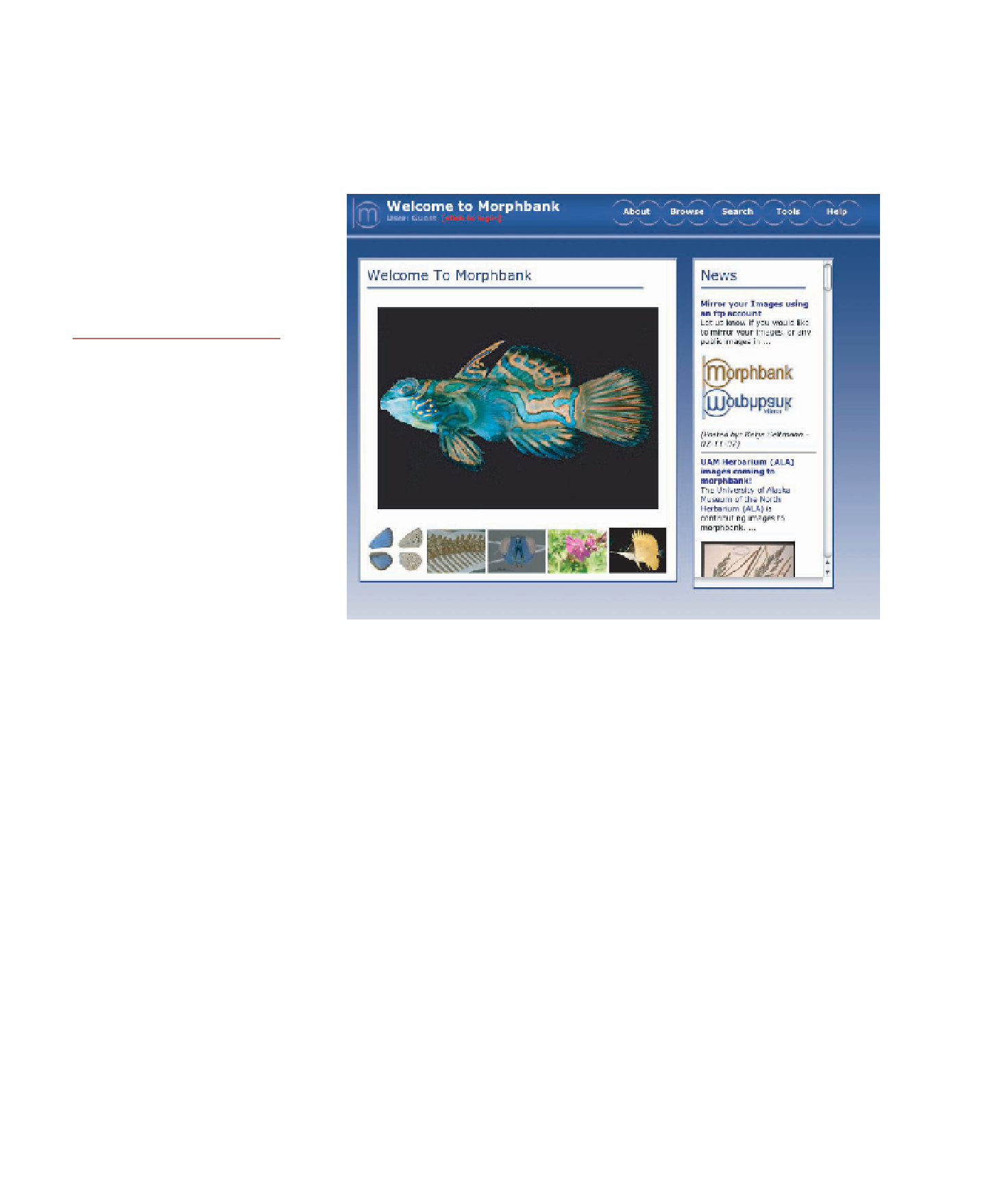Information Technology Reference
In-Depth Information
•
Database size.
The number of records or files in the database
•
Database cost.
The purchase or lease costs of the database
•
Concurrent users.
The number of people who need to use the database at the same time
(the number of concurrent users)
•
Performance.
How fast the database is able to update records
•
Integration.
The ability to be integrated with other applications and databases
•
Vendor.
The reputation and financial stability of the database vendor
The Web-based Morphbank
database allows scientists from
around the world to upload and
share biological and microscopic
photographs and descriptions that
support research in many areas.
(Source:
www.morphbank.net)
For many organizations, database size doubles about every year or two. With the in-
creasing use of digital media—images, video, and audio—data storage demands are growing
exponentially. In fact, the volume of data being created has surpassed the world's available
technology companies such as Google and Microsoft, who are buying hundreds of acres of
many businesses and government agencies are working to consolidate data dispersed across
the organization into smaller, more efficient centralized systems.
Using Databases with Other Software
Database management systems are often used with other software or the Internet. A DBMS
can act as a front-end application or a back-end application. A
front-end application
is one
that directly interacts with people or users. Marketing researchers often use a database as a
front end to a statistical analysis program. The researchers enter the results of market ques-
tionnaires or surveys into a database. The data is then transferred to a statistical analysis
program to determine the potential for a new product or the effectiveness of an advertising
campaign. A
back-end application
interacts with other programs or applications; it only in-
directly interacts with people or users. When people request information from a Web site,
the Web site can interact with a database (the back end) that supplies the desired information.
For example, you can connect to a university Web site to find out whether the university's
library has a book you want to read. The Web site then interacts with a database that contains
a catalog of library topics and articles to determine whether the topic you want is available.

